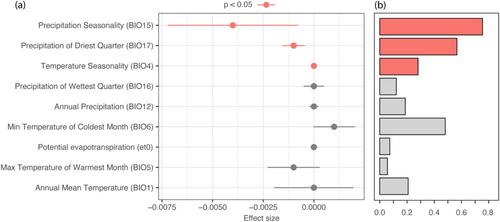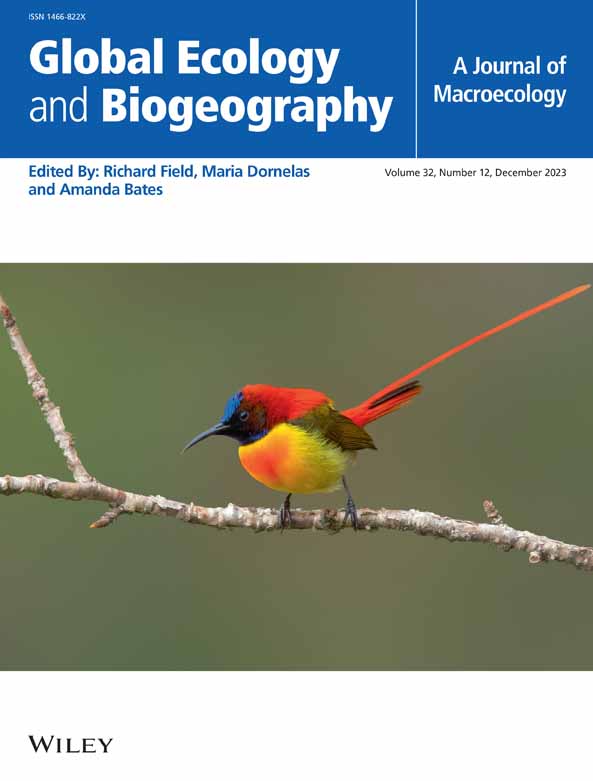Plant Communities in the Americas Are Highly Bee Dependent Regardless of Biome or Local Bee Diversity
Abstract
Aim
All bees depend on angiosperms for survival, while many angiosperms depend on bees for reproduction. However, bee and flowering plant species richness do not peak in the same geographical regions of the world, suggesting that the flora in regions where bees are not as diverse, such as the tropics, may be relatively less bee-dependent. We test this assumption by analysing whether local relative bee diversity can predict the proportion of angiosperm species that attract bees (i.e., “bee flowers”).
Location
The Americas.
Time Period
Present.
Major Taxa Studied
Bees and angiosperms.
Methods
We map the proportion of bees to angiosperm species using recently available datasets of geographic distribution for both taxa. We then combine data from surveys on pollination systems for 56 floristic communities to estimate the proportion of angiosperm species with bee flowers in different regions. Finally, we test whether the proportion of bee flowers in a community can be predicted by a combination of relative bee species richness and abiotic environmental variables.
Results
Broad distribution maps show that the relative richness of bees in relation to angiosperms decreases in tropical areas; however, there is no evidence that tropical floristic communities are less dependent on bees. Interestingly, the proportion of angiosperm species with bee flowers was almost always found to be around 50% across biomes, with some variation depending on the habitat type and method of data collection.
Main Conclusions
Our results suggest that plant communities can be highly bee-dependent even where bees are relatively less diverse. While lower species richness does not mean lower abundance, and fewer bee species of specific life histories can still provide adequate pollination supply for a large number of angiosperm species, this pattern may impact how bee flowers interact with bees in different areas, and consequently how bees and bee flower specialisations have evolved over time.


 求助内容:
求助内容: 应助结果提醒方式:
应助结果提醒方式:


